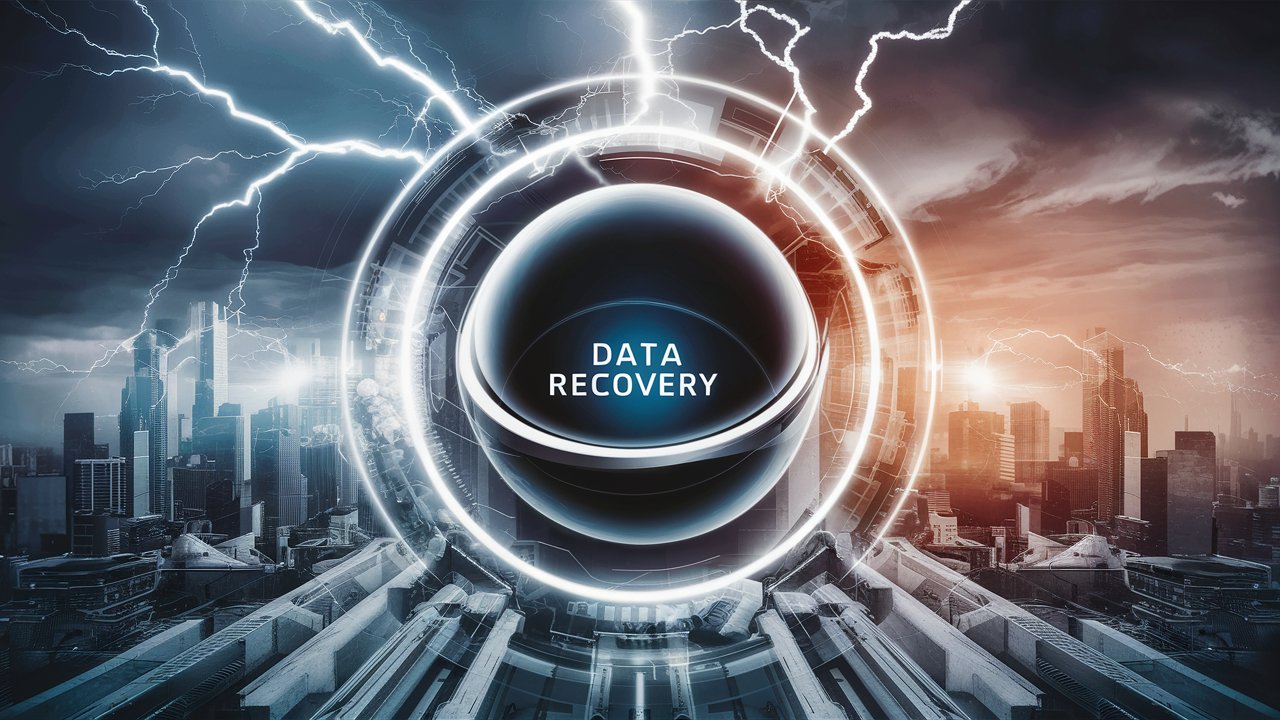Intro
Protecting sensitive data is critical in the digital age, as data is king. Electrical fluctuations pose a threat to data security that is frequently disregarded. Power risk management is essential for protecting data from any damage. We'll go into the world of electrical fluctuations in this guide and look at ways to reduce power-related dangers so your data is safe.

Decoding the Basics of Electrical Fluctuations
Electrical fluctuations can be thought of as the unpredictable waves in the vast ocean of our electrical systems. These variations in voltage levels are not just mere disturbances but can act as potent forces capable of influencing the performance and longevity of our electronic devices. Such fluctuations spring from a variety of sources, ranging from the dramatic—like lightning strikes—to the more mundane but equally impactful shifts in grid supply. Imagine your electronic devices as ships navigating these waves; without proper preparation, a sudden surge could easily capsize them, leading to potential data loss or corruption. It’s essential to grasp the nature of these electrical tides: understanding their origins allows us to better anticipate their impact and implement the necessary measures to protect our precious digital cargo. This knowledge serves as the foundation upon which we can build a robust power risk management strategy, protecting our data from the unseen dangers that lurk within our walls. By becoming familiar with the characteristics of electrical fluctuations, we equip ourselves with the insight needed to fortify our digital defenses against the unpredictable elements of power supply.

Understanding How Data is Affected by Power Issues
Data is maintained in a delicate balance within a sensitive ecology found within the complex circuitry of our modern devices. Changes in voltage have the same unpredictable effects as weather patterns in that they can upset this balance and cause data loss or deterioration. A sudden power surge can cause havoc on digital data and change it permanently, just like a thunderstorm might turn a calm environment into chaos. On the other hand, a decrease in electricity can deprive devices of the energy required to preserve data integrity, much like a drought can, which could lead to corruption or loss of access.
The relationship between power issues and data vulnerability is not merely theoretical. Real-world scenarios have shown that even minor electrical disturbances can have compounding effects over time, gradually eroding data quality or accessibility. It's like water damage on a piece of art; initially imperceptible, but over time, the damage becomes painfully evident, compromising the value and integrity of the work.
Navigating these electrical storms requires a proactive stance, recognizing that our data is continuously at the mercy of power's whims. By understanding the nature of these threats and their potential impact on digital information, we can better prepare our defenses, ensuring that our data remains secure and resilient against the unpredictable currents of our electrical infrastructure. This knowledge empowers us to take informed actions, laying the groundwork for a comprehensive approach to power risk management that keeps our valuable data protected from the elements of uncertainty.
Key Strategies in Power Risk Management
To gracefully and strategically traverse the rough waters of electrical fluctuations, one needs to adopt a set of tactics that serve as both a compass and a shield. The three layers of defense—surge protectors, uninterruptible power supply (UPS) devices, and a steadfast dedication to frequent data backups—lay the foundation for power risk management. These are not just tools; they are gatekeepers, and they are all vital to protecting our digital domains from the erratic onslaught of power outages.
embracing surge protectors gives our electronic strongholds the capacity to fend off the violent advances of excessive voltage, much way a fortress's walls used to ward off medieval siege engines. In the meanwhile, the UPS systems act as watchful guardians, providing a place of stability during a blackout and guaranteeing that our digital operations can go forward, unhindered by the whims of the outside world.
However, the frequent backup of data is the cornerstone of our fortress, the solid ground upon which our fortifications rest. This approach goes beyond simple safety; it is the act of securing the very substance of our digital life, making sure that the core of our data is safe and sound regardless of how strong the storm outside may be.
These techniques are the cornerstone of a robust power risk management strategy that aims to protect our digital assets. By implementing and perfecting these techniques, we equip ourselves with the means to not only withstand but also prosper in the face of any electrical storms that may arise.

Implementing Surge Protectors and UPS Systems
In the realm of safeguarding our digital domains from the unpredictable whims of electrical currents, surge protectors and UPS (Uninterruptible Power Supply) systems emerge as pivotal allies. These devices do more than just protect; they provide a buffer against the chaos of electrical fluctuations, offering peace and continuity in the face of potential disruption. Integrating surge protectors into your network acts as the first line of defense, absorbing and diverting the excess energy that could otherwise overwhelm and damage your electronic systems. They stand guard, vigilant against the surge, much like a levee holding back a flood.
Meanwhile, UPS systems serve as the ultimate stronghold of resilience, offering a seamless transition to a backup power source when the primary supply falters. This ensures that critical operations remain unaffected, preserving the sanctity of your data against the abruptness of power outages. Deploying these systems is not merely about installing hardware; it's about weaving a safety net that cradles your data, ensuring its integrity and availability even when the electrical supply shows its fickle nature. Together, surge protectors and UPS systems are not just tools but the very essence of a proactive approach to power risk management, providing a shield and continuity to navigate through the electrical storms untouched.

Regular Data Backups: A Non-Negotiable Practice
Regular data backups are an essential ritual that takes center stage in the complex choreography of protecting our digital worlds. It's a methodical process, similar to the painstaking preservation of historical records for future generations by an archivist. Consider how every backup creates a temporal sanctuary for your data—a moment in time that is impervious to electrical disturbances—for your information. This methodical approach is the epitome of readiness, guaranteeing that the core of our informational world is safe, preserved, and accessible when the digital heavens close in and the storm of power outages looms. It is more than just a safety measure; it is a statement of our resiliency and proof of our determination to continue even in the face of hardship. By including regular data backups in our power risk management plans, we can turn an otherwise tragic story into one of ongoing stability and protection. Regular data backups act as ever-vigilant, silent sentinels in this environment, making sure our digital legacies can withstand any storm.
The Role of Professional Power Risk Assessments
Venturing into the maze-like structure of electrical systems without a map can be similar to navigating a ship through foggy, unfamiliar waters. Professional power risk assessments serve as the lighthouse in this scenario, offering illumination and guidance through the complexities of our electrical infrastructures. By engaging experts who specialize in power risk management, individuals and organizations gain access to a wealth of knowledge and experience that can Identify vulnerabilities within their electrical setups that may not be immediately obvious to the untrained eye. These professionals employ sophisticated tools and methodologies to conduct thorough examinations, identifying areas where electrical fluctuations could potentially compromise data integrity. Their insights and recommendations are invaluable, providing a strategic roadmap to fortify defenses against the unpredictable nature of power supply issues. Engaging in professional power risk assessments is not just a precautionary measure but a strategic move to ensure that our digital assets are guarded against the invisible threats that loom within our electrical systems. This proactive approach empowers us to anticipate challenges and implement solutions that keep our data secure, reinforcing the foundations of our power risk management strategies.

Best Practices for Power-Related Disaster Recovery
Navigating through the aftermath of a power-related disaster requires a strategy as resilient and well-planned as a ship's course through stormy seas. The core of such a strategy lies in a great care-crafted disaster recovery plan, one that delineates the actions to be taken following incidents of data loss or corruption due to electrical disturbances. Key to this plan is the swift identification of the issue, rapid response protocols to prevent further damage, and detailed procedures for data restoration. It emphasizes the importance of regular drills to ensure all team members are adept at executing the plan under pressure, similar to a crew preparing for rough weather. This plan, combined with a robust data backup system as discussed earlier, forms the dual pillars of a comprehensive approach to disaster recovery. By adhering to these best practices, businesses can significantly reduce downtime, swiftly recover critical data, and maintain continuity in the face of electrical challenges, ensuring smooth sailing ahead.